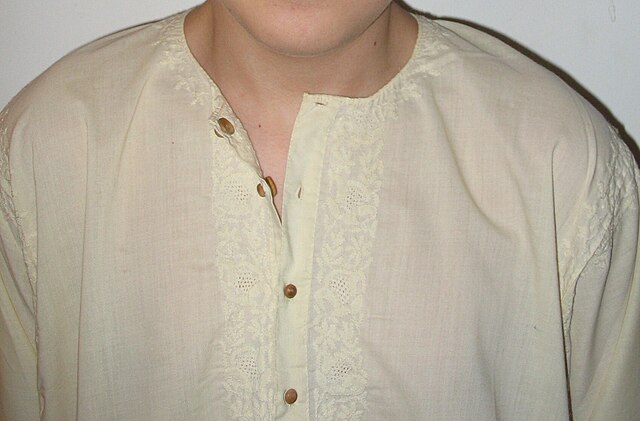A kurta is a loose collarless shirt or tunic worn in many regions of South Asia, and now also worn around the world. Tracing its roots to Central Asian nomadic tunics, or upper body garments, of the late-ancient- or early-medieval era, the kurta has evolved stylistically over the centuries, especially in South Asia, as a garment for everyday wear as well as for formal occasions.
A traditional cotton kurta with wooden cuff-links-style buttons, centre placket opening with chikan, a style of embroidery from Lucknow, India
A silk kurta worn with churidar and decorative mojari sandals.
Close up of knot-and-loop button for a kurta with opening off the left shoulder, a relic of the qaba of the Ghaznavid period.
Close up of front opening kurta with plackets and cuff links
A tunic is a garment for the body, usually simple in style, reaching from the shoulders to a length somewhere between the hips and the knees. The name derives from the Latin tunica, the basic garment worn by both men and women in Ancient Rome, which in turn was based on earlier Greek garments that covered wearers' waists.
Coptic-Byzantine wool tunic, small enough for a child (6th century AD) (Walters Art Museum)
Germanic tunic of the 4th century AD found in the Thorsberg moor
20th-century Yemenite Jews dressed in tunics







